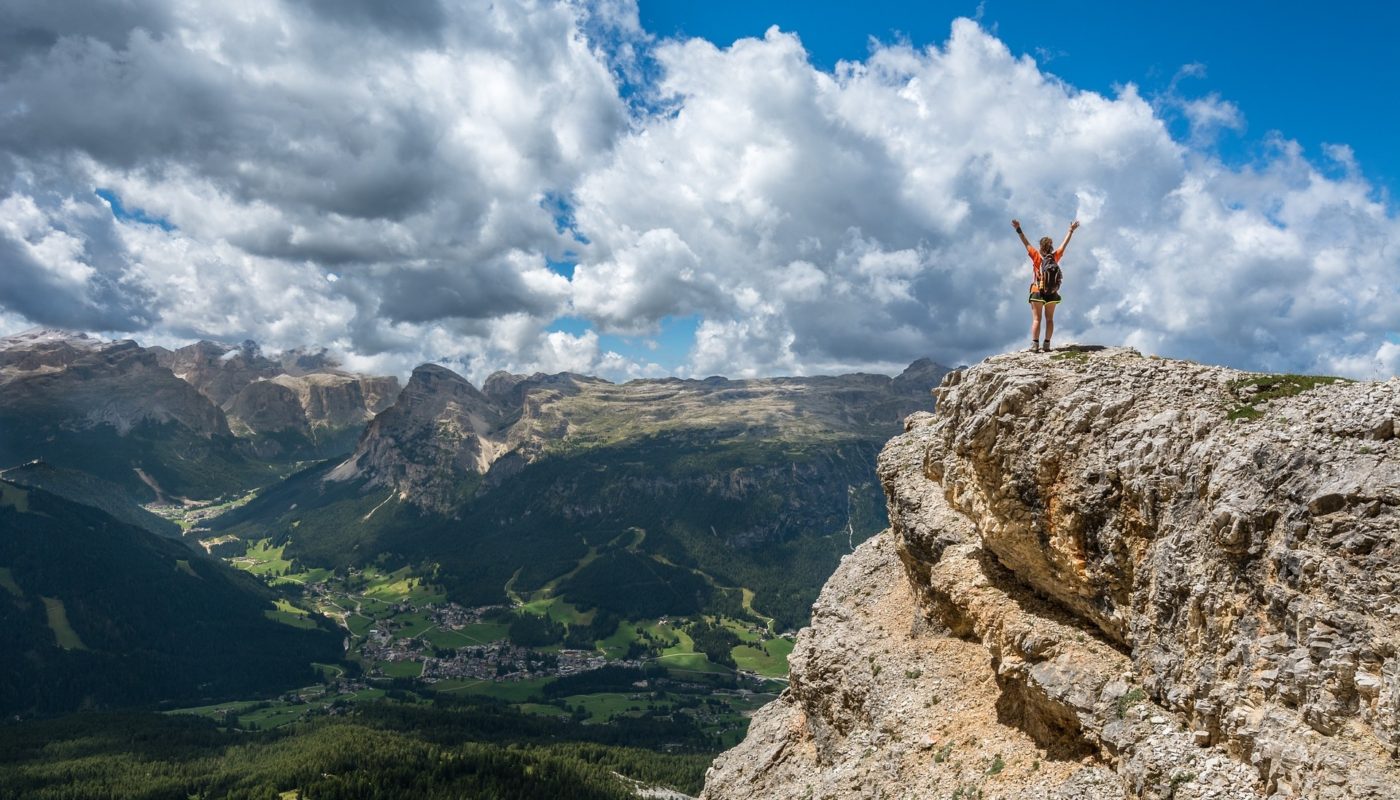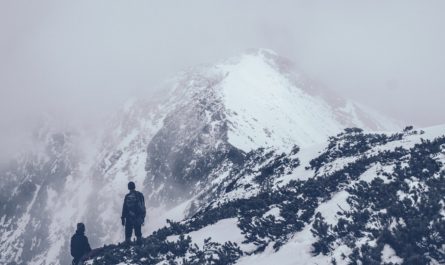Mountaineering is serious business. It takes years of training and practice, and people need to be in good physical shape to go the distance. Of course, how difficult you want this hobby to be is entirely up to you. There are plenty of great mountains to summit for beginners, and more and more mountains are installing paths for disabled and elderly people.
Still, it’s important to know that climbing a mountain is a dangerous undertaking, and you shouldn’t rush into it without proper preparation. So, when you’re a beginner, it can be hard to know where to get started. That’s why I’m writing this guide!
To start with, let’s think about what your goals are with this hobby. If you’re looking to scale Everest and the like, then you’re in for a lot of hard work. But if it’s less about the challenge and more about getting out and discovering nature, while getting some healthy exercise, then what you may be looking for is more like difficult hiking. Knowing your goals will help you decide on what sort of training and classes to take.
Take a Class
The easiest first step is to sign up for a mountain climbing class. These classes may be entirely indoors, while some may include some real-world mountain climbing experience at the end. I’d highly recommend starting indoors with some basic rock climbing courses.
The purpose of your early classes should be about learning about the equipment and techniques. Pay attention and ask questions if you don’t understand. It’s also a great way to meet other climbers!
Go on Hikes
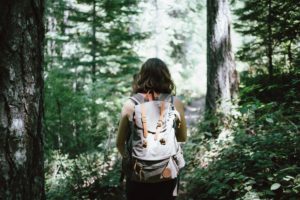
This is an easy way to test whether or not mountain climbing is for you, and it’ll help you build up the endurance necessary to succeed. Hiking doesn’t require a lot of extra equipment or complicated techniques. Use a backpack to get used to carrying the extra weight. You can pack it with water bottles to add weight, but feel free to start light if you need.
Aside from the exercise which will help you train for scaling a mountain, hiking is a good low-risk way of testing the waters. Do you enjoy being out in nature for hours? Does the strenuous physical activity excite you or does it make you feel miserable? Hiking will give you a good sense of whether or not mountaineering is for you.
Learn the Equipment
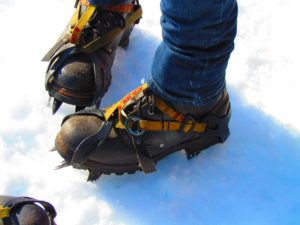
The big difference between hiking and mountain climbing really comes down to the climbing. In order to scale rock face and to deal with the ice and snow of high altitudes, you’re going to need specialized mountain equipment.
Crampons give you important traction on ice or in snow. They’re typically spiky metal fixtures for your boots. Speaking of boots, make sure you have a good pair of mountain boots. Make sure they’re comfortable, but they should all be heavy duty enough to handle the rugged terrain, and of course your crampons should fit them perfectly. An ice axe is another must have for mountain climbing. Use it to help gain a hold on steep slopes, and keep in mind that the more difficult routes may need you using two ice axes. A harness will be needed for mountaineering, as well as the necessary rope and clamps. Finally, don’t forget a good rock helmet.
The specific equipment you’ll need will depend heavily on the particular routes, so make sure you know what’s entailed before you set out. It’s always better to over-prepare. In addition to typical climbing gear, be sure to have basic outdoors equipment too like a good knife, first aid supplies, flares and a fire starting kit.
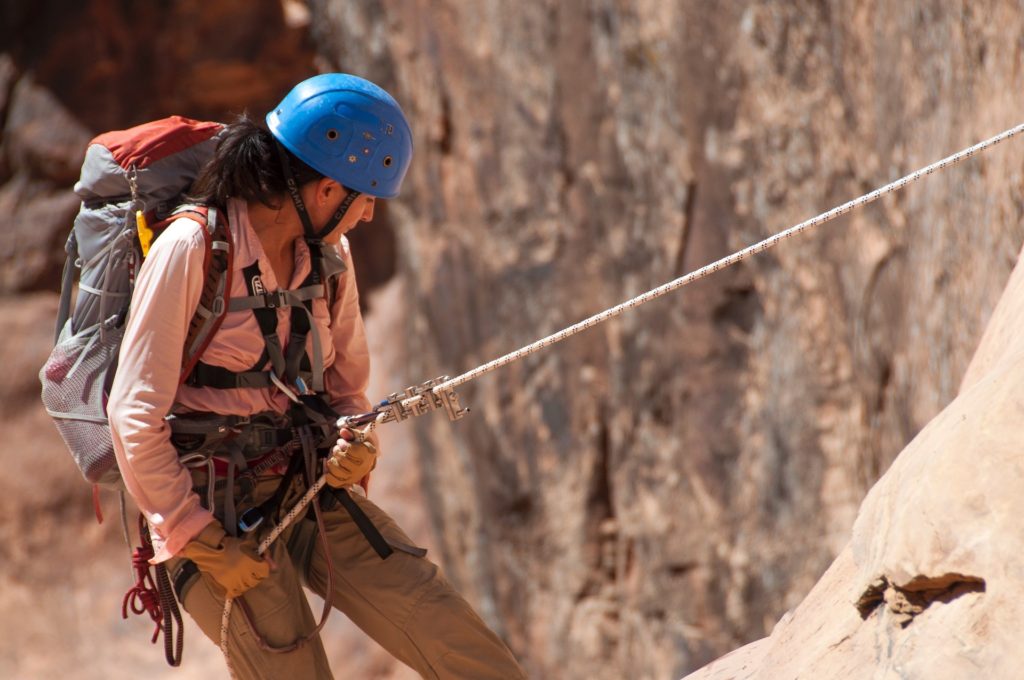
You can practice with a lot of this sort of equipment at climbing gyms. Many will have equipment you can rent or check out, so you don’t have to invest a lot in your own stuff just to learn the ropes. (Pun intended!)
Get in Shape!
Speaking of the gym, make sure you’re in good physical condition to scale a mountain. While upper-body strength is certainly important for a lot of climbs, don’t underestimate the importance of sheer endurance. On many mountains, you will be out pushing the limits for hours at a time. So make sure your exercise routine includes plenty of cardio and eat healthy foods.
One of the best ways to train your body to handle the physical toll of mountaineering is through hiking, particularly uphill. Put on your pack and weigh it down with enough weight to simulate what you’d be carrying on an actual climb. You won’t be racing up the mountain at full speed on most climbs, but for exercising, running up elevated paths is a good way to train your body. On days you can’t make it out for a good uphill hike, hit the treadmill or go outside for a long jog.
Find a Guide or a Climbing Group
The best way to learn mountaineering is from experts. You may not know any right now, but going to climbing classes will put you around a lot of active climbers of all different experience levels. Don’t be afraid to ask for guidance. Since climbing is a group activity, people are always happy to find a new climbing friend. Just be upfront about your own experience level so they know what they’re working with.
Through a guide and other climbers, you can learn the tricks of mountaineering and discover all the great climbing routes around your area.
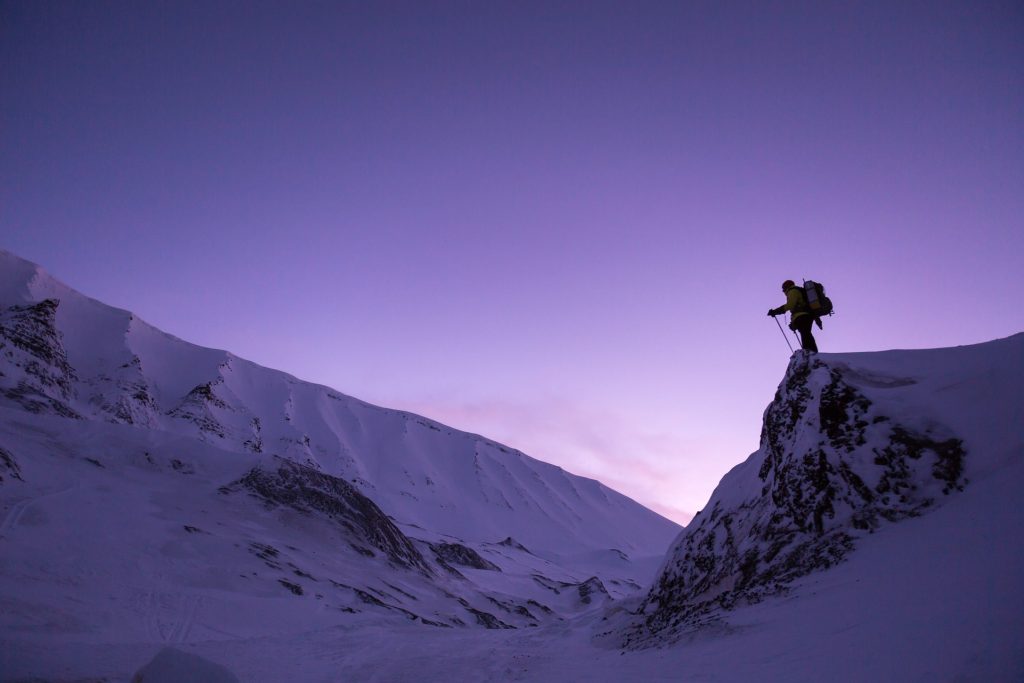
Important Safety Tips
Always remember to prioritize safety.
- Tell Someone: Be sure that friends or family know when you go out on an expedition, particularly if you’re going to be gone for a while in a remote location. If something happens, you’ll want someone who knows to call for help on your behalf.
- Have Communication Equipment: You’d be surprised at how many places get cellphone reception these days. You can probably rely on your cellphone for most expeditions, but be sure to verify ahead of time. If you’re going into particularly dangerous and remote territory, then investing in a satellite phone can be a life or death decision. Remember, just because you have the equipment with you, doesn’t mean you have to use it. Take the opportunity to get away from it all, but have something just in case.
- Don’t go alone! Mountain climbing is not a solitary pursuit. You should always go with a group. It’s important to have people looking out for each other and who can help you in an emergency.
- Research: Don’t go into an expedition blind. You can ask questions from people who have already climbed the mountain or locals familiar with it. A lot of information is also available online these days. The more you know and understand about the expedition, the better prepared you’ll be for it. One important thing to know is how long the expedition will likely take.
Climb that Mountain!
Once you’ve learned the basics and trained for the challenge, set off to reach your first summit. Don’t over exert yourself on your first go, and be sure to let your climbing companions know it’s your first time out on a mountain. Choose a good mountain for beginners, and make sure you go during the right season. You can learn a lot ahead of time by researching the mountain online beforehand. If you’ve already got a mountain in mind, you can adjust your training and preparation specifically for the challenges it will present.

